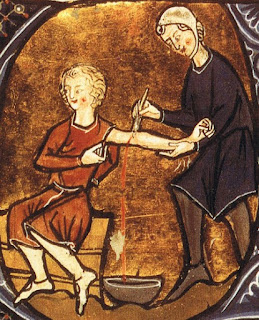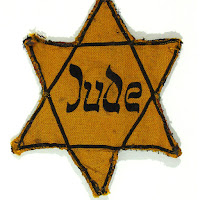Alice was the only child of a wealthy Flemish merchant, born about 1263. She married a wealthy merchant and moneylender named William Outlaw. After William died Alice shared the business with her stepson, also named William.
Alice married again ... and again ... and again. By 1302 she was married to Adam Blunt, also a moneylender. He had children from a previous marriage. Adam died within a couple years of marriage to Alice. By 1309, she was married to a wealthy Tipperary landowner named Richard de Valle. He died about 1316, and she was owed a widow's dower; her stepson (also named Richard) denied her this, and she brought legal proceedings against him. Richard and his siblings, who wished to keep that money for themselves (which would have been illegal) were quite angry with her. Alice then married a fourth time to John le Poer, who also had children from a prior marriage.
Through all this, she accumulated a substantial amount of wealth and maintained the business she shared with her stepson, William. This was despite the fact that Alice and her second husband Adam had briefly been suspected of killing the elder William.
Her other stepchildren, however, were not so agreeable to her. As John le Poer was sick and dying, he expressed the concern that he was being poisoned by his wife. After his death, his children accused her of poison and witchcraft, accusations in which they were joined by her other stepchildren. The children complained to Bishop Ledrede, who sprang into action.
Investigation led to seven charges:
1. Denying Christ and the Church.
2. Sacrificing animals to demons.
3. Asking demons for advice.
4. Having a sexual relationship with an incubus.
5. Holding coven meetings and burning candles in the church at night without permission.
6. Making magic powders and potions from ingredients including but not limited to body parts of unbaptized children, worms, etc.
7. Killing her husbands for their money, which she shared with her stepson William Outlaw.
Her maid, Petronilla de Meath, was also accused. William Outlaw was also called to court for heresy and consorting with a heretic.
The stepchildren were likely thinking they could go through the bishop's ecclesiastical court for a quicker decision that would benefit them, rather than going through the civil courts which had more rules. Things were not that simple, however, and the case of the first person condemned for witchcraft in Ireland gets more complicated, which I'll tell you about tomorrow.



























